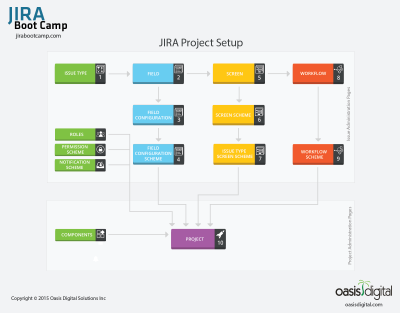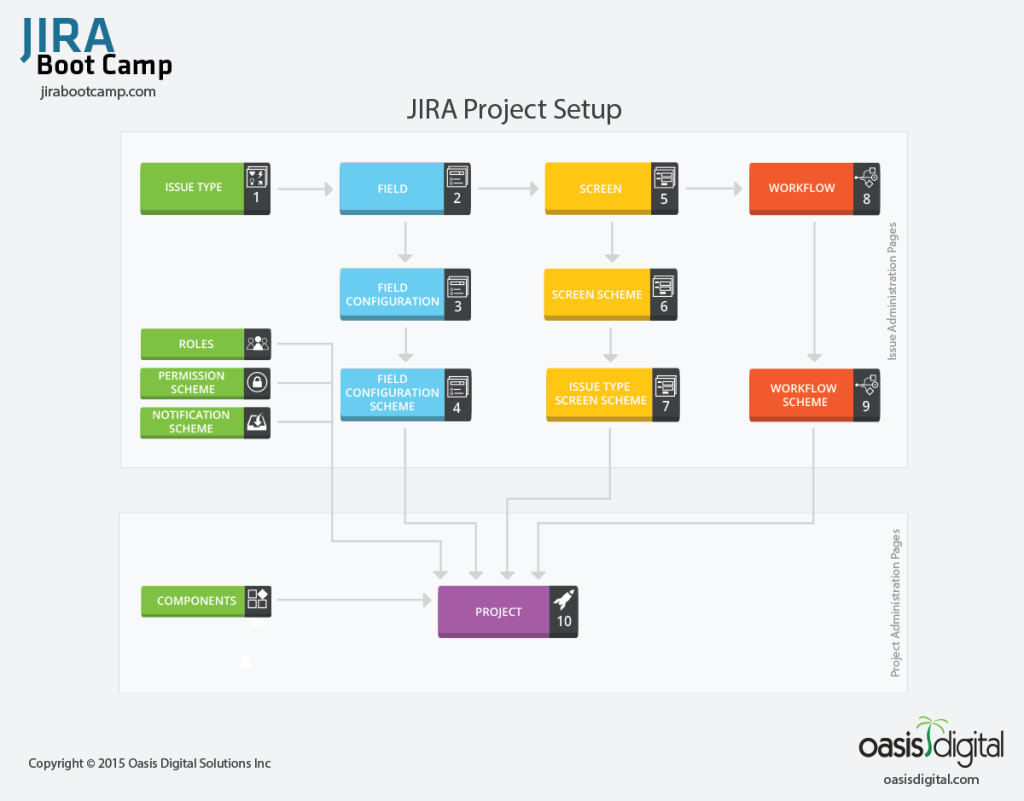Why We Teach Workshops

At Oasis Digital, Expium’s sister company, our core business is to build custom software that helps our customers thrive. Everyone that works at Oasis Digital solves challenging technical problems every day. Our team creates solutions for complex customer needs, and is constantly improving our technology stack to do this more effectively. Similarly, at Expium we do the same thing but in and other problem domain, maximally effective and efficient use of the Atlassian product suite.
At both companies, how do we apply our skills to our training offerings? Why are these skilled achievers taking time to be instructors? We feel that a natural outgrowth of our work is to take our understanding of the most effective tools and technologies we use and offer them as classes. We also believe that your are not an expert until you can effectively teach others. This reasoning is partly due to my background.
Although my career has always been about technology, I have also been deeply involved in education. In the 90s I was working with school districts to roll out fiber networks connecting their buildings, distributing digital video to the classroom, and testing the boundaries of technology in education. One major lesson I learned during this period was how little you really know until you use the technology yourself. Having to work with the implications of your choices and adapting to unforeseen events results in a depth of knowledge about systems that you cannot gain otherwise.
Talking about a system’s capabilities, writing notes, and whiteboarding are all nice. And these are the primary content of many training courses. But when you get to work trying to execute the ideas formed during these types of sessions, the holes in your preconceptions can come screaming to the forefront.
This is the reason we have chosen to offer workshop classes taught by those who are already using these tools to solve real enterprise problems. When students attend JIRA Boot Camp, they are expected to get to work and apply new ideas as they learn them. At the beginning of class students set up their own instances of JIRA Cloud. They get to explore and understand the application configuration themselves. Through the duration of the class they naturally handle configuring projects end to end multiple times. By the time they leave the class they have a picture of what can and cannot be done easily. They can build upon the knowledge of someone who has found efficient and effective best practices and used them for many different work solutions.
A good example is demonstrated by the diagram below. Setting up a project in JIRA that works well is not a preset, unidirectional process. However, there is a discrete, well-defined flow to the configuration. I will write explicitly about this process in a future article.
Students often press me to email this diagram to them and I suspect it ends up on bulletin boards as a good reminder of the process. The diagram has meaning because they have worked through it every day in the class. This familiarity allows them to respond to organizational needs or nudge a reluctant administrator in a direction helpful to the organization.
At the end of each class the students voluntarily fill out a survey. Here are a few of the responses I have received that reinforce our decision to offer workshop, not lecture, courses.
“A big strength of the class was the hands-on practice of doing and setting up projects”
“It was great to have a sandbox to play in with no fear of breaking the production environment”
“I loved the personal lab environments in the class”
“I learned how to create projects from scratch and to use best practices”
“The real examples we did in class benefitted me greatly”
“I benefited from starting projects end to end. Hands on, working in a real instance was great!”
“I learned through the end to end examples of building projects in JIRA”
“The actual lab work and demos site showed us how to work in a systematic way to understand each component of JIRA”
These are just a few quotes from the last couple of classes. I could list pages of similar comments. We also receive the same type of responses in our other classes.
Our recipe for training success:
1 Instructor with real world experience, no full time teachers or lecturers allowed. Pure practitioners only.
1 Cutting edge technology with complexities but great potential
8-30 Students eager to learn
Immerse for 3 days in labs and challenging examples
Send back to their organizations and watch the reaction spread to move their teams toward greater productivity.
The success we have seen in our classes comes from a combination of pieces that fit together. First we bring in instructors that are deeply experienced and use the technology every day. These are not professional lecturers or teachers. They step from working systems and projects directly into the classroom. We also only teach on advanced technologies that have significant complexities that are not easily accessible, and have great potential that is difficult to realize. We push students to find this value in our classes.
Practical experience has shown the value of this approach. Our classes are not the cheapest. Our classes are not a vacation for students, they are hard work. After how impressed our students are with the knowledge of the instructors, the third most common comment is how taxing the class is. Students are simply tired at the end of three days, but in a good way. We believe our workshop-based classes are worth it, and most likely to catapult others to success.

